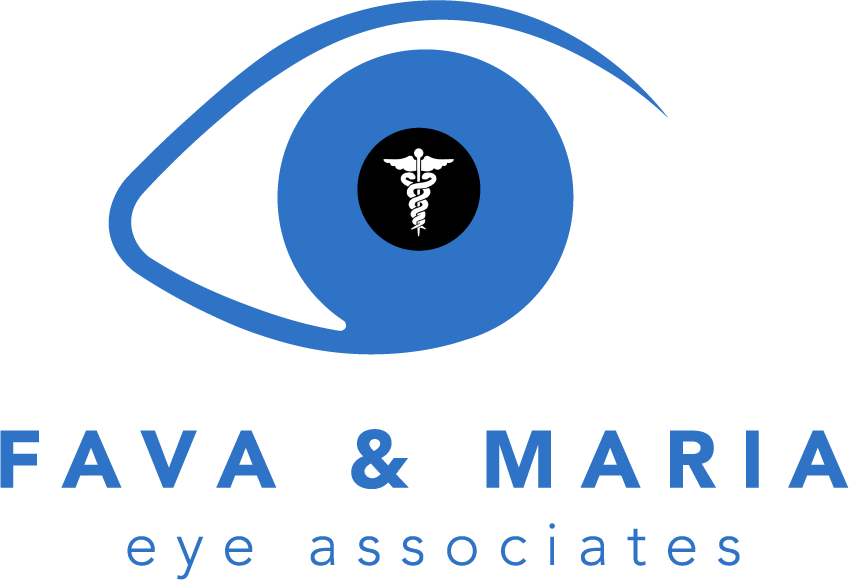
Glaucoma Eye Exams
Glaucoma is a leading cause of preventable vision loss and blindness in older individuals in the United States and Canada and the second leading cause of blindness in the World, even more than macular degeneration.
What is Glaucoma?
Glaucoma is not a single disease. It is actually a group of eye diseases that cause damage to the optic nerve due to an increase in pressure inside the eye, which is called intraocular pressure (IOP). When detected in the early stages, glaucoma can often be controlled, preventing severe vision loss and blindness. However, symptoms of noticeable vision loss often only occur once the disease has progressed. This is why glaucoma is called “the sneak thief of sight”. Unfortunately, once vision is lost from the disease, it usually can’t be restored.
Treatments include medication or surgery that can regulate the IOP and slow down the progression of the disease to prevent further vision loss. The type of treatment depends on the type and the cause of glaucoma.
Risk Factors
Prevention is possible only with early detection and treatment. Since symptoms are often absent, regular eye exams which include a glaucoma screening are essential, particularly for individuals at risk of the disease. While anyone can get glaucoma, the following traits put you at a higher risk:
- Age over 60
- Hispanic or Latino descent, Asian descent
- African Americans over the age of 40 (glaucoma is the leading cause of blindness in African Americans, 6-8 times more common than in Caucasians.)
- Family history of glaucoma
- Diabetics
- People with severe nearsightedness
- Certain medications (e.g. steroids)
- Significant eye injury (even if it occurred in childhood)
Signs and Symptoms of Glaucoma
The intraocular pressure caused by glaucoma can slowly damage the optic nerve, causing a gradual loss of vision. Vision loss begins with peripheral (side) vision, resulting in limited tunnel vision. Over time if left untreated, central vision will also be affected which will increase until it eventually causes total blindness. Unfortunately, any vision that is lost from the optic nerve damage cannot be restored.
What are the Symptoms?
Typically, glaucoma sets in without any symptoms. At the early onset of the most common type of glaucoma “open angle” glaucoma, vision remains normal and there is no pain or discomfort. This is why the disease is nicknamed the “sneak thief of sight”.
An acute type of glaucoma, called angle-closure glaucoma, can present sudden symptoms such as foggy, blurred vision, halos around lights, eye pain, headache and even nausea. This is a medical emergency and should be assessed immediately as the intraocular pressure can become extremely high and cause permanent damage within hours.
Types of Glaucoma
The primary forms of glaucoma are open-angle and narrow-angle, with open-angle being the most common type.
Primary open-angle glaucoma (POAG)
POAG gradually progresses without pain or noticeable vision loss initially affecting peripheral vision. By the time visual symptoms appear, irreparable damage has usually occurred, however, the sooner treatment starts the more vision loss can be prevented. When untreated, vision loss will eventually result in total loss of side vision (or tunnel vision) and eventually total vision loss.
Normal-tension glaucoma or low-tension glaucoma
This is another form of open-angle glaucoma in which the intraocular pressure remains within the normal level. The cause of this form of glaucoma is not known, but it is believed to have something to do with insufficient blood flow to the optic nerve, causing damage. Individuals of Japanese descent, women and those with a history of vascular disease or low blood pressure are at higher risk.
Angle-closure glaucoma
Acute angle-closure glaucoma is marked by a sudden increase in eye pressure, which can cause severe pain, blurred vision, halos, nausea, and headaches. The pressure is caused by a blockage in the fluid at the front of the eye which is a medical emergency and should be treated immediately. Without prompt treatment to clear the blockage vision can be permanently lost.
Congenital glaucoma
The inherited form of the disease that is present at birth. In these cases, babies are born with a defect that slows the normal drainage of fluid out of the eye; they are usually diagnosed by the time they turn one. There are typically some noticeable symptoms such as excessive tearing, cloudiness or haziness of the eyes, large or protruding eyes or light sensitivity. Surgery is usually performed, with a very high success rate, to restore full vision.
Secondary glaucomas
Glaucoma can develop as a complication of eye surgeries, injuries or other medical conditions such as cataracts, tumors, or a condition called uveitis which causes inflammation. Uncontrolled high blood pressure or diabetes can result in another serious form called neovascular glaucoma.
Pigmentary glaucoma
A rare form of glaucoma, this occurs when pigment from the iris sheds and clogs the drainage of fluid from the eye resulting in inflammation and damage to the eye and drainage system.
Treatment of glaucoma is dependent upon the severity and type of glaucoma present.
Glaucoma Diagnosis and Treatment
Detecting Glaucoma
During a routine comprehensive eye exam to check for glaucoma, your eye doctor will dilate your eye to examine the optic nerve for signs of glaucoma and will also measure the intraocular pressure (IOP) with an instrument called a tonometer.
IOP Measurement
Tonometry involves numbing the eye with drops and then gently pressing on the surface of the eye to measure the pressure. Since your IOP can fluctuate throughout the day and glaucoma can exist without elevated IOP this is not enough to rule out the disease. If there are signs of the disease, further testing will be performed.
Visual Field Test
A visual field test is designed to detect any blind spots in your peripheral or side field of vision. You will be asked to place your head in front of a machine while looking ahead and indicate when you see a signal in your peripheral field of view.
Retina Testing
Your doctor may also measure the thickness of the cornea with an ultrasonic wave instrument in a test called pachymetry or use imaging techniques such as digital retina scanning or optical coherence tomography (OCT) to create an image of your optic nerve to look for glaucoma damage.
Treatments for Glaucoma of the Eye
Eye drops: Drops instilled in the eyes one to four times a day serve to lower the intraocular pressure and treat glaucoma of the eye by a variety of mechanisms. Some lower the pressure by decreasing the production of fluid, some by increasing the outflow and some by a combination of both. Sometimes more than one kind of drop is used at a time. These drops are powerful medications and can have systemic side effects. Dr. Fava and Dr. Maria will discuss these with you and take into account your other medical conditions before deciding which medicines are best for your glaucoma of the eye.
Medications for glaucoma of the eye can preserve your vision, but they may also produce side effects. You should notify your ophthalmologist if you think you may be experiencing any of these:
- A stinging or itching sensation
- Red eyes or redness of the skin surrounding the eyes
- Changes in pulse and heartbeat
- Changes in energy level
- Changes in breathing (especially with asthma or emphysema)
- Dry mouth
- Changes in sense of taste
- Headaches
- Blurred vision
- Change in eye color
All medications can have side effects or can interact with other medications. Therefore, it is important that you make a list of the medications you take regularly and share this list with each doctor you see.
Laser Surgery for Glaucoma: Different types of laser surgery for glaucoma may be effective for different types of glaucoma. In primary open-angle glaucoma, the drainage angle is treated with a laser (called a trabeculoplasty). This laser surgery for glaucoma has proven to be very effective in lowering the eye pressure and may be the first line of treatment in certain patients. Dr. Maria and Dr. Fava have been using the advanced SLT laser in their office since 2003. In angle-closure glaucoma, a hole is made in the iris (iridotomy) to restore the flow of fluid to the drainage angle.
Operative Eye Surgery: When the glaucoma of the eye has progressed to the point where operative eye surgery is needed, the ophthalmologist uses micro-surgery to create a new drainage channel for the aqueous fluid to leave the eye, which lowers the intraocular pressure. Eye surgery is recommended if your ophthalmologist feels it is necessary to prevent further damage to the optic nerve. As with laser surgery for glaucoma, eye surgery is typically an outpatient procedure.
Who Performs Laser Surgery for Glaucoma and Operative Eye Surgery?
Dr. Maria and Dr. Fava are ophthalmologists who perform laser surgery for glaucoma and operative eye surgery. They are fully trained in the most modern laser and microsurgical techniques for glaucoma of the eye procedures, including small-incision and no-stitch cataract surgery and releasable-suture glaucoma filtration surgery.
An ophthalmologist is a medical doctor with specialized training in diagnosing and treating all eye diseases and disorders, including glaucoma of the eye, and is the only eye care provider professionally qualified to perform laser surgery for glaucoma and operative eye surgery.
Where Is Laser Surgery for Glaucoma and Operative Eye Surgery Performed?
Both Dr. Fava & Dr. Maria perform most laser surgery for glaucoma and operative eye surgery at Valley View Surgical Center, a state-of-the-art accredited facility in Lebanon, PA, that is adjacent to the office of Fava & Maria Eye Associates.
What Is My Part in Glaucoma of the Eye Treatment?
Treatment for glaucoma of the eye requires teamwork between you and your doctor. Your ophthalmologist can prescribe treatment for glaucoma, but only you can make sure you follow his instructions.
Once you begin treatment for glaucoma of the eye, your ophthalmologist will want to see you more frequently. Typically, you can expect to visit your ophthalmologist every three to six months, but this will vary depending on your treatment needs.
Helpful Hints
- Know what type of glaucoma of the eye you have. Some medicines may make glaucoma worse. This depends on the type of glaucoma of the eye you have, as well as the glaucoma symptoms experienced and the symptoms of optic nerve damage. Most patients with open angle glaucoma can take any type of medicine without affecting their intraocular pressure.
- Take your drops as they have been prescribed for you. Keep your eyes closed for about 5 minutes after putting your drops in. If you are on more than one drop, wait 15-20 minutes between drops so the first one is not washed away.
- Carry the names of your medicines and a list of your medical diagnoses with you. This will help should you ever have a medical emergency which might interrupt your medication or lead the examining physician to misinterpret the size of your pupils.


Saturday By Appointment Only